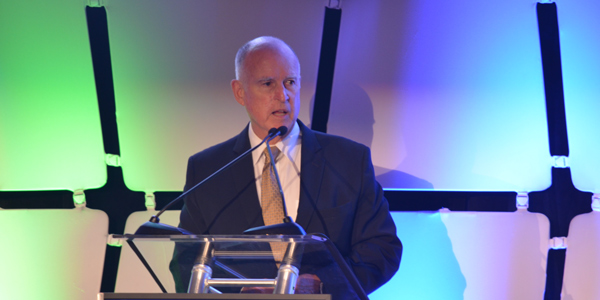By Hudson Sangree
SACRAMENTO, Calif. — Gov. Jerry Brown’s controversial plan to transform CAISO into an RTO took an unexpected turn Thursday in the State Senate’s Appropriations Committee.
The committee’s members were set to vote on the plan’s first step, AB 813, either killing it or sending it to the Senate floor. Instead, the bill was withdrawn from Appropriations and sent back to the upper house’s Rules Committee.
The move likely was intended to give proponents time to work out a deal to allow the state-chartered CAISO to transform itself into an independent organization positioned to expand into the vast Western energy market.
“The Senate is taking the time needed to get this right, which is so important because full integration of the western electricity grid is vital to California’s clean energy future,” the Natural Resources Defense Council, a supporter of the measure, said in an email immediately after the move was announced.
The measure now could languish in Rules or be sent directly to the Senate floor as the legislature nears the end of its two-year session Aug. 31. Previous efforts to authorize CAISO’s expansion have stalled during the past two years in the face of strong opposition both inside and outside of California. (See Governor Delays CAISO Regionalization Effort.)
Regionalization Risks
AB 813 would authorize CAISO’s Board of Governors to submit a plan to the California Energy Commission to change the ISO’s governance structure to include transmission owners from outside California. If adopted, it would be the first step in a multiyear process to make CAISO an RTO for the West.
Those who’ve opposed AB 813 include the Sierra Club, municipal utilities and ratepayer advocates. They contend the measure would lump California in with coal-producing states such as Wyoming and put California at risk of greater interference from federal regulators under the Trump administration.
“I don’t buy the argument that we have to regionalize to take advantage of opportunities elsewhere,” said Barry Moline, executive director of the California Municipal Utilities Association, which represents publicly owned utilities throughout the state.
Moline told RTO Insider that the Western Energy Imbalance Market is already doing a good job at allowing energy to be bought and sold as needed among Western states, without building new transmission lines from wind farms in Wyoming to consumers in California.
Creating more renewable energy sources in California and using in-state transmission lines would further the state’s aims without adding risk, he said.
Moreover, he said, AB 813 would benefit wealthy out-of-state investors and conglomerates that want California ratepayers to pay for infrastructure from which they’d profit.
“There’s a lot of transmission companies and a lot of renewable resource developers that want to deliver kilowatt-hours into California,” Moline said. “These folks want to make money off of California.”
The proposal’s champions include Brown, CAISO, some environmental nonprofits and companies that stand to profit. It was introduced by Assemblyman Chris Holden, chairman of the Assembly Utilities and Energy Committee.
Those arguing for the bill said it would further California’s ambitious renewable energy goals by tapping into Wyoming windmills and Arizona solar arrays, while spreading sustainable energy throughout the West.
“This is the direction the grid is heading in,” said Carl Zichella, NRDC’s Western transmission director. “We need to be able to operate the system as a congruent whole.”
A set of amendments adopted Aug. 7 was meant to ease the concerns of those who worried about linking deep-blue California with the red states of the interior West.
“The purpose of the amendments is to reassure people that the progress California’s been making on renewable energy and climate change are not likely to be interfered with,” Zichella said.
The new language included a requirement that a California TO, retail seller or publicly owned electric utility not join or remain a member of an RTO with a centralized capacity market.
The amendments also insisted the state not undermine its ambitious scheme for achieving reductions in greenhouse gases and for purchasing electricity from renewable energy and zero-carbon sources.
The Aug. 7 changes, however, were apparently insufficient to ensure the measure’s passage through the Appropriations Committee before Friday, the last day for fiscal committees to meet and report out bills.
AB 813 can now be amended in the Rules Committee and sent to a vote of the full Senate before the last day of August, bypassing Appropriations. The bill passed the Assembly last year.
If it clears the legislature, Brown would then have until Sept. 30 to sign the measure into law. If it proves too complex and divisive for quick resolution, Brown could call a special session of the legislature this fall.




